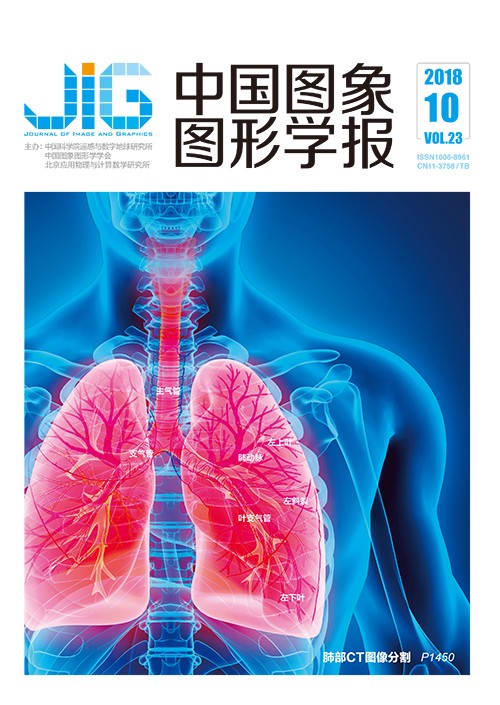
针对质量评价的环境星遥感真实图像库构建
摘 要
目的 随着遥感信息爆炸时代的来临,海量的遥感图像信息不断地从太空中传来。如何有效地利用这些遥感数据成为学者们新的研究热点。遥感图像质量评价不仅能筛选出有价值的图像以供后续的图像处理,如地物分类、目标识别等,还能对卫星设备的运转情况进行检测,而目前还没有公开的针对质量评价的遥感图像库。为此,构建了一个针对质量评价的环境星HJ-1A/1B真实遥感图像专家评分库。方法 遥感图像专家评分库包含70组,每组包含同一地点的5个不同时间点的图像,共350幅真实遥感图像以及每幅图像对应的主观评价质量分数。并通过基于卷积神经网络的图像质量评价算法来验证该遥感图像专家库的可用性。结果 将本文算法和4种效果较好的无参考图像质量评价算法在本文数据库上进行性能检测,并对各算法性能与训练测试集规模的关系进行对比实验。实验结果表明,目前针对仿真图像的无参考图像质量评价算法并不适用于该遥感图像库,验证了遥感真实图像与自然仿真图像的巨大差异,而基于卷积神经网络的算法结果则表明该数据库具有质量评价研究价值。结论 本文构建的基于环境星遥感真实图像库能够为遥感图像质量评价提供验证平台,并且数据规模可以为深度学习在遥感图像处理领域的应用提供支持。
关键词
Remote sensing authentic image database for quality assessment based on environmental satellite
Xu Lin, Chen Qiang(School of Computer Science and Engineering, Nanjing University of Science and Technology, Nanjing 210094, China) Abstract
Objective Advances in space technology have resulted in the rapid increase of satellites in orbit and the ever-increasing scale of remote sensing image data.However,the ineffective utilization of remote sensing data has become a common issue.Remote sensing image quality assessment (RSIQA) not only selects valuable images for other image processing tasks,such as target recognition and object classification,but also monitors the service condition of satellite equipment according to the changing trend of remote sensing image quality.The choice on whether to adjust parameters or repair or replace satellite equipment depends on the assessment reports.RSIQA can be performed either subjectively or objectively.Subjective RSIQA is limited by time and cost considerations,and it can be easily influenced by experimental conditions.These limitations prohibit the extensive use of subjective quality assessment for remote sensing.According to the degree of assessment of a reference image,objective quality assessment can be classified as full,reduced,or no-reference methods.Most RSIQA methods separately model the different distortion types.Therefore,these methods may have not considered the interaction among different distortion types.Furthermore,most methods are based on simulated images because remote sensing data are difficult to obtain,but complex distortions are also difficult to simulate.Although the research on authentic remote sensing images has practical value,a public authentic remote sensing image database for quality assessment has still not been established in China.In other words,RSIQA may still lack a credible verification platform.Method This study builds an authentic remote sensing image database for quality assessment that refers to several existing databases,such as the LIVE simulated image database and usability-based remote sensing image database.Most remote sensing image data are either confidential or for sale,which renders it difficult to acquire resources.By contrast,resources from environmental satellites are public and free.For instance,images of a place taken at different times are easy to collect.Therefore,we choose environmental satellite HJ-1A/1B with a resolution of 30 m to obtain remote sensing image data with a per image size of 600×600.For database universality,we select different surface types,including farmland,river,city,airport,mountain,and port.After the light and geometric consistency corrections,70 representative groups are selected for the database.Given the difficulty of distinguishing surface form in images with low resolution,subjective assessment cannot refer to traditional principles.Hence,we propose principles of quality grading from six aspects:contrast of the entire image,discernibility degree of large-scale surfaces,definition of wide roads,definition of city skyline,discernibility degree of city internal details,and definition of mountain lines.To ensure the objectivity and universality of the subjective quality scores,we choose personnel with two different knowledge backgrounds who will oversee the assessment.One is a non-professional staff whose expertise is image processing but not image quality assessment,and the other is a professional personnel with image quality assessment expertise.They label each remote sensing image according to the principles mentioned above and their own experience in image processing.The experimental equipment,assessment process,and experimental environment are also considered.For the convenience of subjective assessment,we construct the image quality grading system.We also analyze and screen the assessment scores.After the unreasonable scores are eliminated,we obtain the final subjective quality score,i.e.,the mean opinion score.Thus,the database contains 350 authentic remote sensing images with corresponding subjective quality scores,including 70 groups of images.Each group contains 5 images of the same location at 5 different times.The distortion of an authentic remote sensing image is more complex than that of a simulated one.An image may contain several distortion types,and the effect of every distortion type of an image may interact with that of another image.Moreover,the features are difficult to extract in traditional machine learning metrics.Therefore,we verify the usability of the database with the RSIQA method based on the convolutional neural network because of its superior performance in feature extraction.The input of this network is a remote sensing image patch with a corresponding subjective quality score.The main architecture consists of fifty 7×7 convolutional kernels,one 26×26 max pooling,and two full connection layers with a size of 800.The output of the network is the predicted quality score.Result In the experiment,we compare the performance of the proposed metric and the four up-to-date no-reference image quality assessment metrics (FEDM,DⅡVINE,BRISQUE,and SSEQ) with that of the authentic remote sensing image database.The result indicates that the existing no-reference image quality assessment metrics for simulated images are unsuitable for this new remote sensing image database,which indicates a major difference between simulated images and authentic remote sensing images.The result of the method based on convolutional neural network demonstrates the usability of our new database.In addition,we analyze the relationship between the performance and the scale of the training and testing sets because the performance of a traditional machine learning algorithm depends on extracted features,Moreover,in convolutional neural networks,an important aspect is the scale of the training data.Therefore,the performances of traditional image quality assessment metrics are stable with the decreasing scale of training data.Despite the decline in the performance of the proposed convolutional neural network-based metric,it is still superior to traditional metrics a certain extent.Conclusion This study proposes a database for RSIQA.Here,the database contains 350 images of 70 different places captured at different times.We verify the reasonability of our database through the metric based on convolutional neural network.The performance of the proposed metric demonstrates the ability of the database to provide a verification platform for RSIQA.Furthermore,the proposed metric can support the application of deep learning on remote sensing image processing.
Keywords
remote sensing image quality assessment remote sensing image database authentic image environmental satellite convolutional neural network
|



 中国图象图形学报 │ 京ICP备05080539号-4 │ 本系统由
中国图象图形学报 │ 京ICP备05080539号-4 │ 本系统由